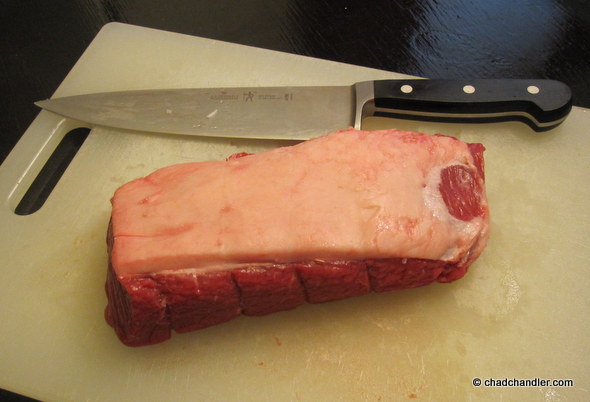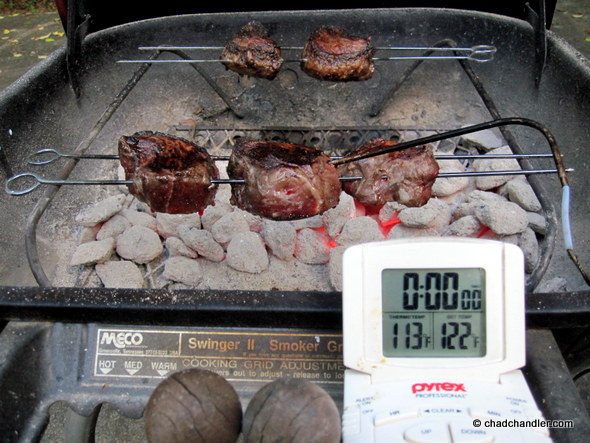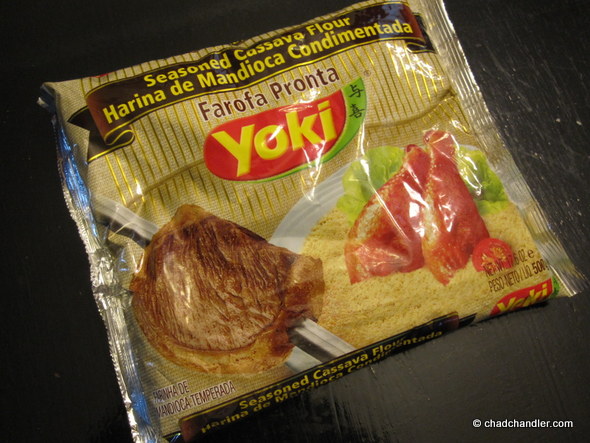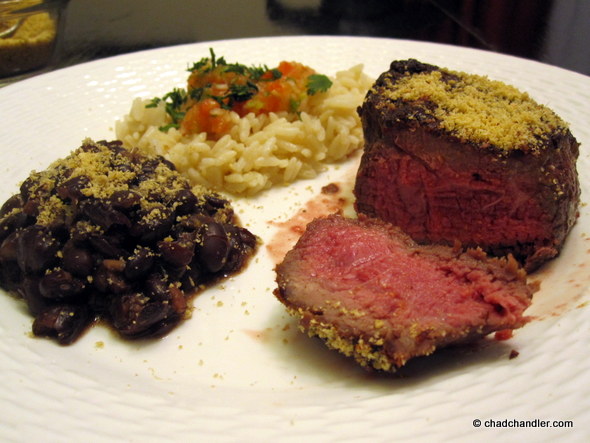Not too long ago, the wife and I visited a Brazilian café that left an indelible impression on us. It was a welcome departure from the overpriced, all-you-can-eat meat feasts that have come to typify churrascarias across the USA. I’ve spent a lot of time and energy lately trying to master the art (and science) of turning relatively inexpensive cuts of meat into high-end meals, and I was impressed with the taste and texture of picanha, the sirloin steak that is the star of Brazilian cuisine.

I wanted to prepare a traditional Brazilian meal that would rival the experience we had in the Brazilian restaurant. I knew I was successful when the wife cleaned her plate and asked that picanha be added to the standard rotation.
The hardest part about making picanha (pronounced peeCONNya) with farofa is getting the picanha and the farofa. The internet is full of misinformation when it comes to pinpointing exactly which muscle constitutes the South American staple. After a long talk with my butcher, I discovered that to get authentic picanha, you have to ask for a top sirloin cap steak with a thin layer of the cap (fat) left on for flavoring. Americans’ aversion to gristle can make this cut hard to find if you’re buying it on an impulse, so it’s a good idea to call ahead. The whole cap steak is triangular in shape and usually weighs between 2-2½ pounds and costs around $20. I didn’t need that much meat, so I had the butcher cut me a rectangular portion that weighed about 1½ pounds and cost around $14.
This is succulent cut of beef that tastes like a cross between hanger steak and a NY strip. And at a fraction of the cost of NY strip, it’s a great bargain. Like so many traditional meals, picanha is a peasant dish. It was the select cut for the gauchos who herded cows in Brazil’s pastureland. It was cooked churrasco-style over an open flame and was prized for the way the melting fat marinaded the meat as it cooked. In the old days, the gauchos would skewer the steaks on their swords, coat them in salt, and cook them over the smoldering campfire coals. Since I’m not a gaucho and I don’t carry a sword, I cooked them over the ubiquitous red and black grill that speckles the suburban American landscape.
You can see the steak here. I carefully scored the fat in a ¼-inch crosshatch and rubbed about a tablespoon of kosher salt into the surface of the beef.

Next, I cut the meat into individual steaks and threaded them onto metal skewers. It’s important to use two skewers, or else the meat would be impossible to flip.

I used a chimney starter to get some charcoal red-hot and raked the coals into the center of the grill. Picanha is flavorful because of the fat that renders out, but that same fat causes frequent flare-ups. So it’s important to allow for indirect heat or else you’ll burn the meat.

Like always, I left nothing to chance. I used a digital thermometer to monitor the temperature. I intentionally under-cooked the meat a little and let it rest on a covered, heated plate until it reached rare/medium-rare.

Farofa is a popular Brazilian condiment. Every culture seems to have its own condiments. In the USA, we have ketchup. Belgians have aioli. Mexicans have pico de gallo. Argentines have chimichurri. Brazilians use farofa as the go-to condiment to season beans, meats, anything else that could use a boost in texture and taste. Farofa is seasoned flour made from dried and ground yuca and/or cassava. It’s grainy like uncooked grits and is a little salty and savory. It can be hard to find, so I ordered a bag of pre-seasoned farofa online. This brand pretty good, but it needs to be toasted in a warm pan with a little butter to really bring out the flavor.

The meal came out great. It was cheap, easy, and there were plenty of leftovers. Look at how succulent this steak looks. It had a genuinely beefy flavor and the fat was salty and stiff like bacon.








Pingback: Six Affordable Steaks You Should Be Buying
Pingback: 20 Grill & BBQ Recipes For Memorial Day | Chad Chandler